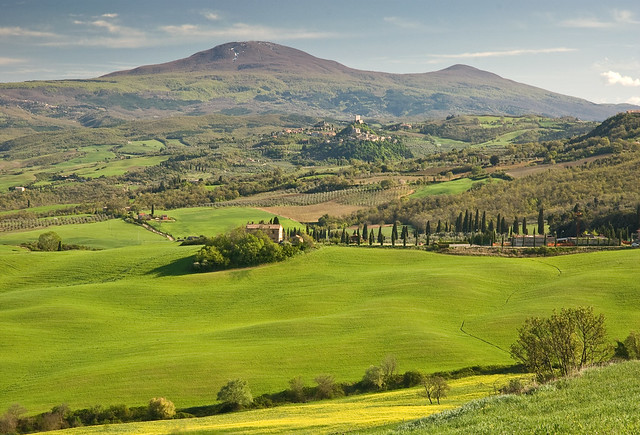“I am about to buy a house in a foreign country. A house with the beautiful name of Bramasole. It is tall, square, and apricot-colored with faded green shutters, ancient tile roof, and an iron balcony […]. The balcony faces south-east, looking into a deep valley, then into the Tuscan Apennines.”
These are the words that Frances Mayes uses in Under the Tuscan Sun to describe the Italian landscape so typical for Tuscany. While it may sound like an idealized view of the landscape, it is accurate.
Not without reason was the Val d’Orcia with its farmland, vineyards and olive plantations stretching hills and valleys lined with cypresses as far as the eye can see, which was declared a World Heritage Site by the UNESCO in 2004.
It’s “exceptional reflection of the way the landscape was re-written in Renaissance times to reflect the ideas of good governance and to create an aesthetically pleasing picture” and for the landscape’s celebration “by painters from the Scuola Senese.” Their “Images of the Val d’Orcia, and particularly depictions of landscapes where people are depicted as living in harmony with nature, have come to be seen as icons of the Renaissance and have profoundly influenced the development of landscape thinking.”
Enjoy the flair of Tuscany and discover more typical landscapes in our Tuscany and Val d’Orcia image searches.
Photos from Dennis_F, Kirstin Mckee, DWH284, MiaRossy, and Mirko M..




